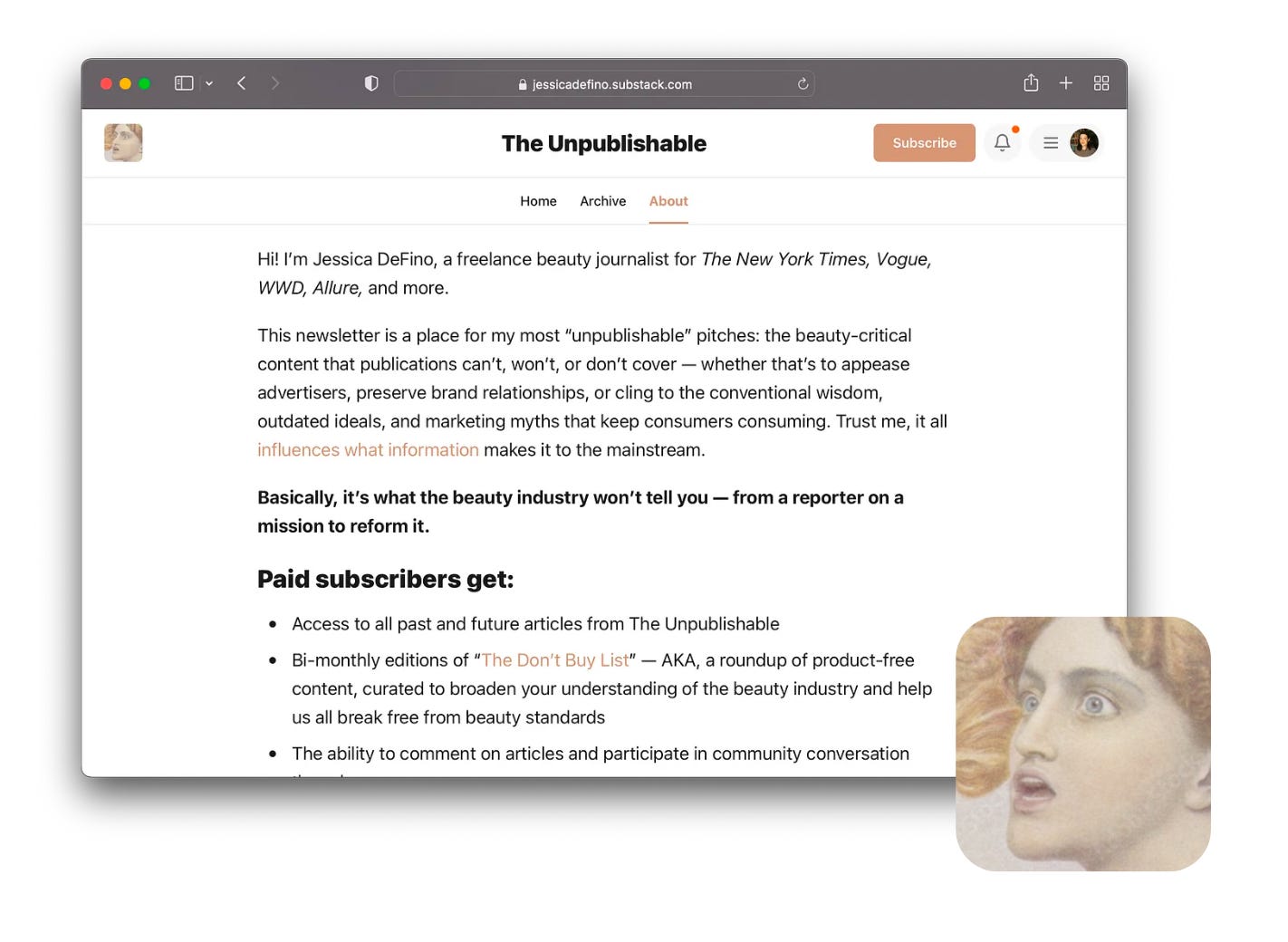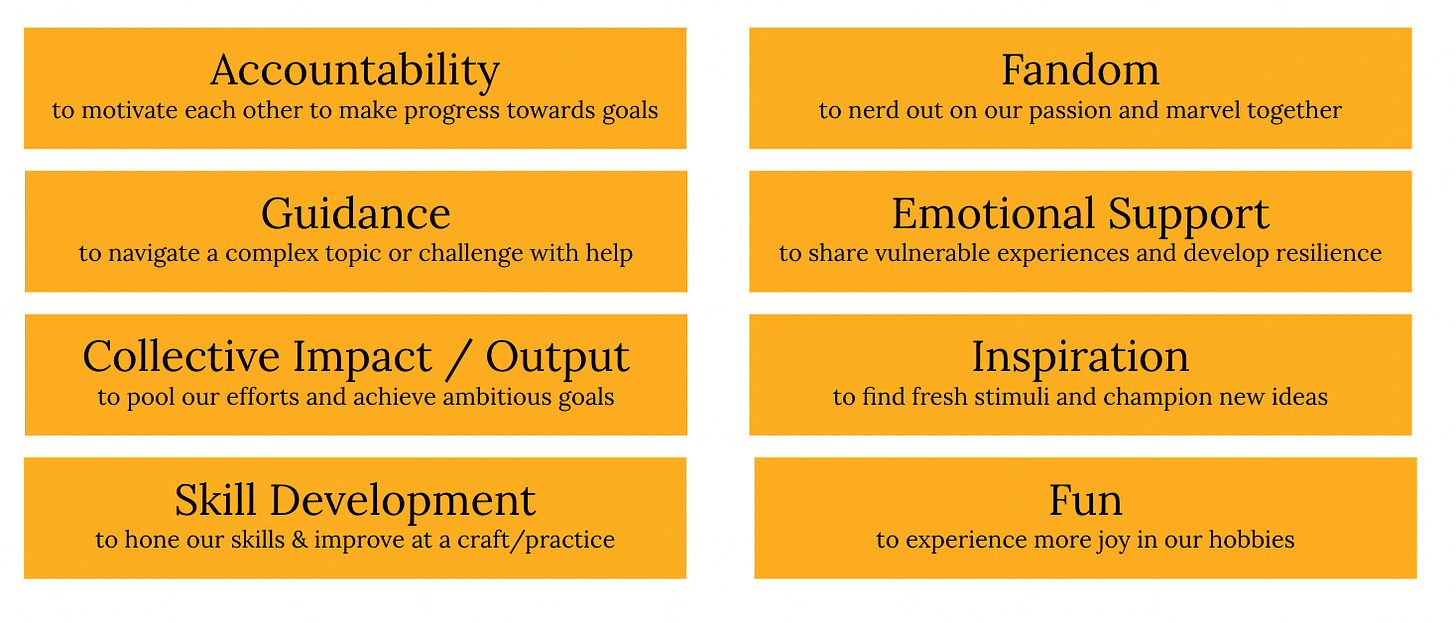There is no secret recipe for what to put behind the paywall to convert free readers to paid subscribers. Writers have found success with a variety of approaches, including offering everything for free and putting everything behind a paywall.
This post will guide you through the tactics available for converting free readers to paid subscriptions, including how to craft your pitch and an overview of how different publications define their free vs. paid tiers.
Do your best work, supported by your subscribers on Substack.
Craft your paid subscriptions pitch
The writers who are most successful across the board have one thing in common: a clear and compelling pitch for why paid subscribers’ support is important. Every time these writers are in front of free readers, they seize the opportunity to pitch them on the value of upgrading to a paid subscription.
If you want your pitch to resonate with an audience, you’ll need to understand who they are. Start by asking a deceptively simple question: Who cares about your writing? It can help to imagine a reader who has a lot of energy around your work and responds to posts in comments or shares them on social media.
Then ask, Why will they pay for your work? Our friends at People & Company have observed eight different themes of why readers become paid subscribers.
You might feel like your publication falls into a few buckets, but try to narrow it down to the one that feels most applicable to your readers.
Take a moment to jot down your answers to these questions:
Why will readers pay for your work?
What do these readers need or want more of?
What’s a problem only you can solve for your readers?
When you draft your pitch, keep the reason why readers are drawn to your writing in mind.
Great pitches
Popular Information: In his publication’s four-year anniversary post, Judd Legum finishes with a pitch to readers that demonstrates the collective impact of paid subscriptions.
“If a few more people choose to become paid subscribers, Popular Information could expose more lies, root out more corruption, and call out more hypocrites. So, if you can afford it, please support this work.”
JoeBlogs: On his About page, Joe Posnanski includes testimonials from readers that repeatedly note that they subscribe because they are fans of him and his voice. So, Joe shares personally why subscriptions are important to him and his family.
“There is a free version and a paid version of JoeBlogs. Both contain lots of words, though perhaps some of the better words are in the paid version. Well, ain’t that America. I’d be appreciative if you signed up and doubly appreciative [if] you bought a paid subscription and helped me put two daughters through college.”
Recovering: On Holly Whitaker’s About page, she tells her story of recovery and how she’s supported others in their healing journey with addiction. She finishes with her pitch to readers, where she spotlights why support is important.
“This is one of my jobs, and I put a lot of work into it. I believe in an ethos of paying people for their work (especially in recovery spaces, where work is undervalued and, therefore, resources are limited). If you love this newsletter, get value out of it, and believe in paying people for their work, consider a paid subscription.”
The Pragmatic Engineer: In a post reflecting on his first year of writing on Substack, Gergely Orosz gets clear about what readers love about his publication. The main theme is guidance on practical software engineering topics. Because The Pragmatic Engineer helps people do their job, Gergely emphasizes this value.
“A special thanks to subscribers who pay for the publication, or expense it as an educational resource. If you’re planning to expense the publication, you are welcome to use a variation of this email template.”
Still not sure how to craft your pitch? Turn to your readers. Writers like Katie Herzog and Jesse Singal use testimonials from readers on their About page to illustrate why they do this work and readers pay for it.
What to offer in your free vs. paid tiers
Getting clear on why readers will pay for your work can help make what you choose to offer in front of and behind the paywall more clear. Let’s take a look at how different publications draw the line between what they offer their free vs. paid subscribers.
All free
This strategy often works best for publications for which readers’ support drives collective impact, such as advocating for a change or advancing a cause.
For writers just getting started, we recommend keeping the majority of your work free and turning on paid subscriptions. Your true fans will be excited to support your work, even if they don’t get anything extra.

Judd Legum positions paid subscriptions to Popular Information as making his investigative journalism possible and accessible to more people.
Anne Kadet’s publication CAFÉ ANNE runs on a donation-based model in which all posts are free and paid subscriptions are encouraged to support the time and work that go into the posts.
Loosely defined free vs. paid
Letting readers know that some posts will be free and others will be paid gives you the flexibility to experiment with the paywall. This can be a good strategy as you crystallize a core offering that readers find especially valuable and will pay for.

On Joe Posnanski’s About page, he generally alludes to his “premium content” being behind the paywall.
Writers like Lauren Hough treat paid posts as a “backstage pass,” using discretion on which posts she wants to share in a more intimate setting with just paid subscribers of Badreads. She explains why specific posts are paid in a note to free subscribers.
Clearly defined free vs. paid
If you have a strong sense for what part of your Substack people are most engaged with and willing to pay for, putting that behind the paywall can be the tipping point that converts free readers to paid subscribers.

Blocked and Reported highlights the fandom that surrounds their podcast and offers extra episodes, early access to free episodes, and community features like the comments section.
Holly Whitaker keeps her weekly essay free to all readers. Paid subscribers get access to a weekly resources roundup, biweekly discussion threads, the comments section, and her full archive of Recovering.
Lenny Rachitsky helps readers do better at their jobs, so he puts his weekly post behind the paywall and does a monthly post for free subscribers. He also sells community access as a big part of his paid tier for Lenny’s Newsletter. Paid subscribers get to join a private Slack community, which many have cited as the most valuable part of their subscription.
All paid
For writers who have built their audience, on or off Substack, putting everything behind the paywall can be a meaningful way to engage with their true fans in a new way.
Putting all posts behind the paywall is most successful in categories like investing and business, where the information shared helps subscribers do their jobs and they may even be able to get reimbursed for the subscription as a business expense.

Doomberg covers energy, finance, and the economy and started as a free publication. After building their email list with all free posts, they launched paid subscriptions and put everything behind the paywall.
The Pragmatic Engineer shares longform educational articles every Tuesday and timely news on big tech and high-growth startups. Everything is behind the paywall, and Gergely Orosz has even organized resources and templates for engineers and engineering managers that help them do their jobs.
Remember: Your best writing is also your best marketing. What you share for free lets new readers discover and fall in love with your work. The more subscribers you have on your free list, the bigger the opportunity you have to market paid subscriptions directly to people who know your work.
Get your pitch in front of free readers
Now that you have spent some time getting clear on what to offer in your free and paid tiers and crystallized why reader support is important for your work, make sure you get the message out.

About page: Your About page is where new readers and subscribers get a window into the big picture of your publication.
Great About pages: The Isolation Journals, Technically, and The UnpublishableHeaders and footers: Headers and footers are often overlooked as spaces to pitch your readers to upgrade their subscriptions. In your settings, you can create custom headers and footers, for free and paid readers, that automatically populate in any post via email.
Read more: How to edit email banners, headers, and footersSubscription benefits: Whenever readers land on your Subscribe page, they will be presented with your pricing tiers and the benefits available at each level. Update your benefits so they are clear and compelling.
Read more: How to customize your subscription benefitsPaywall: Previewing a paid post to free readers can give them a flavor of what to expect from a paid subscription. A flexible paywall enables writers to email a customized preview to free readers alongside a call to subscribe. You can even offer a free trial when readers reach the paywall.
Read more: How to publish a free preview of a paid postManifesto post: Readers subscribe at different points in your writing journey, which means not everyone knows your origin story or has heard why paid subscriptions matter to your work. Those who know your story will likely enjoy hearing it again and be reminded why they support your work.
In action: Common Sense newsroom update and My Sweet Dumb Brain committing to the newsletter in a new wayThe anniversary post: Reflecting at anniversaries and growth milestones is a way to celebrate with your readers, plus a chance to remind them about paid subscriptions.
In action: Robert Reich celebrating one year in a video and Platformer’s plans for year three
Converting free readers to paid subscribers isn’t all on your shoulders
Substack Boost is our most energetic investment to date in helping writers accelerate their growth. To start, if a publication turns on Boost, we’ll use data to automatically show discounts and special offers to readers at appropriate moments to maximize revenue. (For example, we may extend a discount to a reader when they are deciding to cancel a paid subscription.) We expect the details of Boost to evolve over time, but to always be aimed at helping writers grow their audiences and earnings.
As your publication evolves, so should your pitch and positioning of free vs. paid subscriptions. Some of the most successful publications have made big pivots on their conversion strategy. When transparently communicated with subscribers, they were eager to support them in their work.
Do your best work, supported by your subscribers on Substack.









Share this post